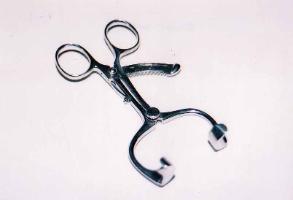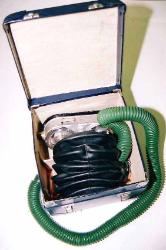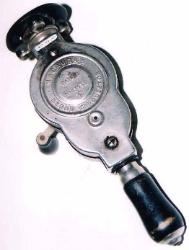Sunny Days?
Tayside Medical History Museum
Medical School Foyer
Ninewells Hospital & Medical School
October 2003 - June 2004

Sunnyside Royal Hospital
The Foundation of Montrose Asylum
Mrs Susan Carnegie founded the Montrose Lunatic Asylum, Infirmary & Dispensary as she was shocked that the insane in Montrose were being imprisoned in the Tolbooth without proper care. She wished to provide a quiet and convenient asylum for them, so that "by good treatment and medical aid, some of those unfortunates might be restored to society." To help meet the costs Mrs Carnegie made a public appeal which raised £679. In June 1781 the asylum opened on Barrack Street in Montrose and the first patient was admitted on 6th May 1782. At first medical treatment was supplied monthly and for free by local doctors, but in 1799 the Asylum Managers agreed to Mrs Carnegie's recommendation that a paid physician be appointed for a year at a cost of £15. In 1803 she suggested that the Asylum should obtain a Royal Charter, so that the Managers could receive donations, bequests and purchase land. The Charter was granted in 1810. In 1834 when the first full time medical superintendent, Dr W A F Browne, was appointed.


Medal for Proficiency in Mental Nursing and Browne's Mouth Gag


Oxford Inflating Bellows and Blood Circulator
The Move to Sunnyside
Overcrowding remained a persistent issue throughout the early 19th century, despite two extensions to the original asylum building. In 1855 the Scottish Lunacy Commission was appointed to review all the asylums in Scotland, and it condemned Montrose Asylum as being unsuitable. A committee was appointed to find a new site for the Asylum and land around the farm at Sunnyside was chosen. The first patients were transferred in 1858, with most of the rest following in the next two years. Despite increased space for patients the New Asylum lacked facilities for dining and recreation. Finally in 1882 a new kitchen, dining hall and recreation hall were built at the rear of the main building. The building work continued as the Managers realised that the sick wards were too small for the number of patients and in 1886 they decided to build a new detached Infirmary for 60 patients. The cost of this building work was covered by the sale of the old Asylum for £5000 to the War Office to use as barracks, and the new building was completed in 1891. The Managers were also required to build more space for patients as numbers had once again begun to rise - in 1894 there were 576 patients. In 1889 Carnegie House was opened for private paying patients, with Howden Villa and Northesk Villa opening in 1901 and 1904 to house non-paying patients.
Sunnyside in the 20th century
During the last century a number of administrative changes occurred at Sunnyside. In 1948 the National Health Service (Scotland) Act ended Montrose's independent status as it came under control of the Eastern Regional Hospital Board. Its name was also changed from the Royal Asylum of Montrose to the Royal Mental Hospital of Montrose. In 1962 it became Sunnyside Royal Hospital and came under the jurisdiction of new management. Despite these changes Sunnyside continued to provide care for the mentally ill in and around Montrose. During both World Wars resources were stretched as patients were transferred from other hospitals in Scotland and many of the staff left to fight. In 1940, patient numbers reached 1052 - the highest ever. After the war overcrowding prompted suggestions for a new Admissions Unit, but in the 1950s and 60s the problem was finally solved by the introduction of new drugs which ended the need for prolonged admission of patients. During the last forty years patient numbers have further decreased and under the current Tayside Primary Care Trust, a phased closure of much of the site has begun.